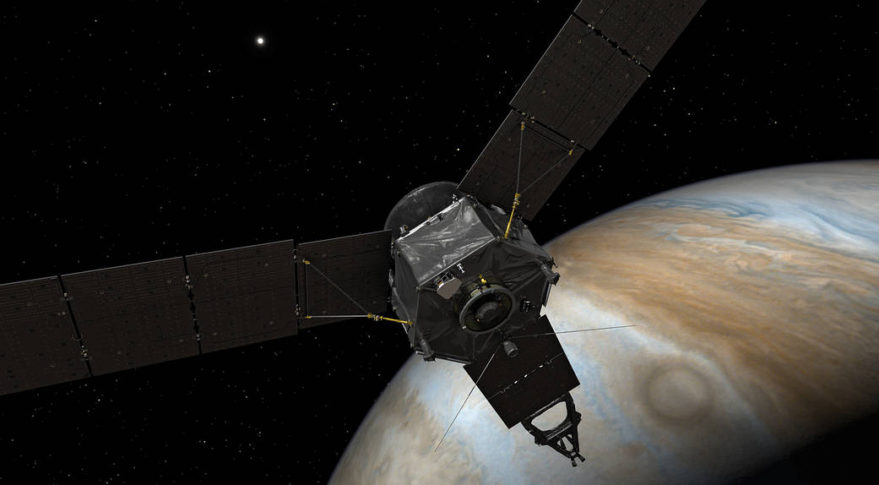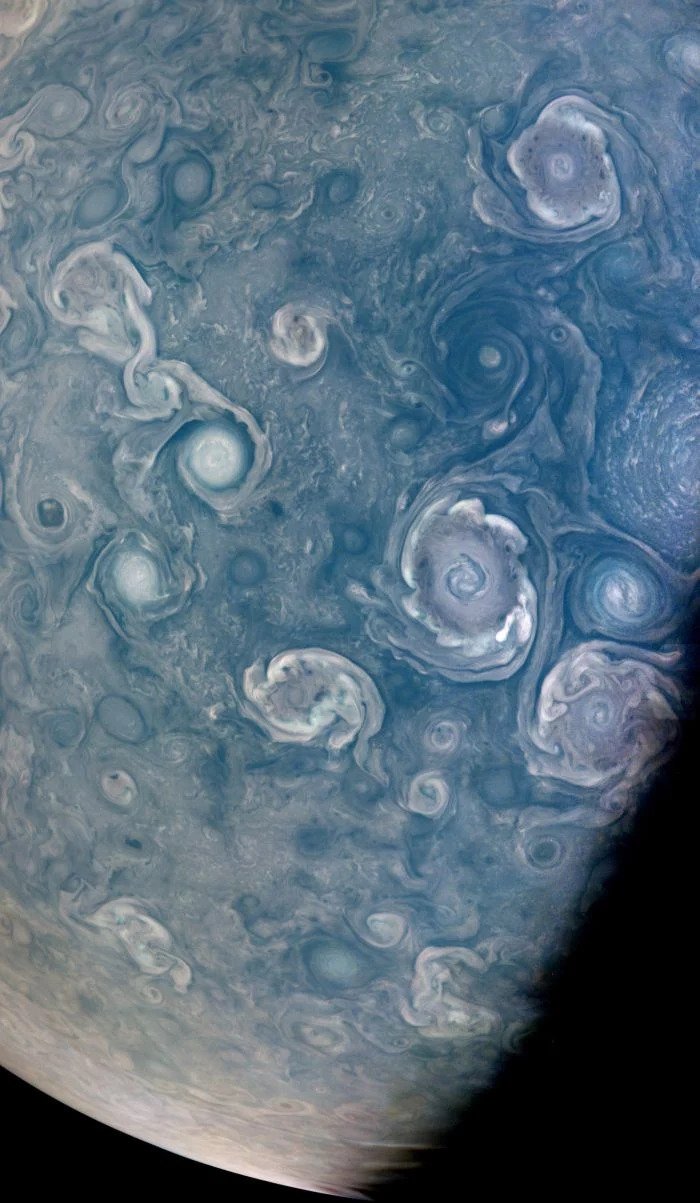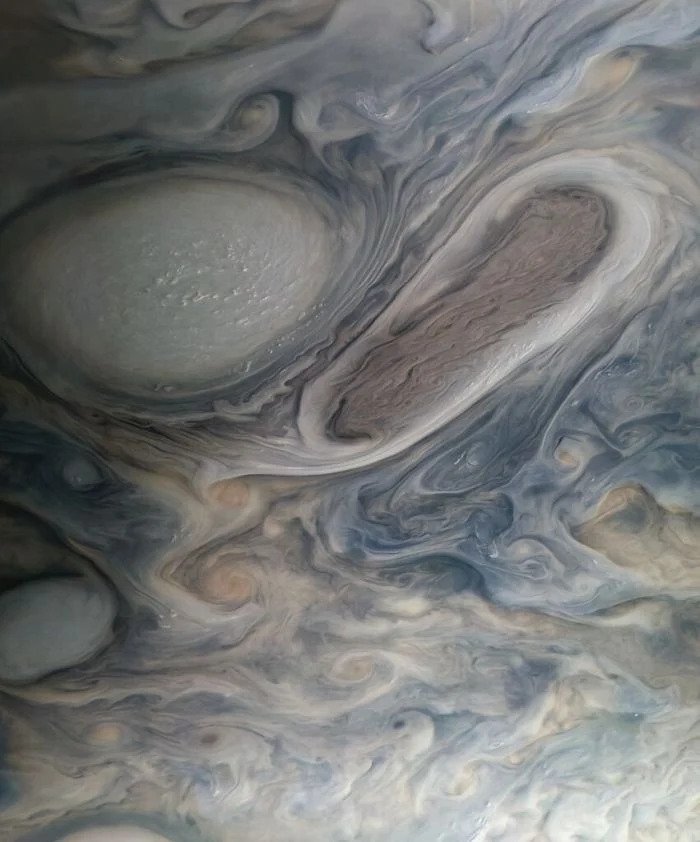The Juno device sent incredible photos of giant storms raging at the North Pole of Jupiter. They seem peaceful, but they really interact dynamically, although they do not merge.

Amazing photos of storms on the gas giant
The Juno device transmitted an amazing image of the north pole of Jupiter. It shows the dance of storms connecting and interacting with each other. From a distance, they seem to be just a beautiful pattern, although in fact they are raging with a force that the wind on earth cannot reach.
A photo of the storms was taken by Juno during the 43rd close passage on July 5. At the time of the shooting, the device was at a distance of only 25,100 km from the tops of Jupiter’s clouds. The poles of the giant planet are oriented so that we can observe them only for a limited time.
Storms on Jupiter can reach 50 km high and hundreds of kilometers in diameter. Understanding the mechanism of their formation will allow us to understand how the atmosphere of a giant planet works in general. Therefore, scientists are very interested in their sizes, shapes and colors.

The North and South poles of Jupiter
The poles of Jupiter have unusual atmospheric features. So, the southern zone contains, or rather, contained six giant storms, each the size of the United States. One is in the center, and five more are around it in the form of a regular pentagon. They rotate around the central one clockwise.
However, between the flights of Juno, the sixth cyclone formed near the south pole of Jupiter. It carefully joined the others and turned the pentagon into a hexagon. As for the North Pole, it looks even more strange, because there are nine such colossal storms there. One is in the center, the others rotate around it counterclockwise.

And all these storms do not merge into a single whole, as happened on Saturn, where its famous hexagonal storm was formed. Instead, other storms are wandering around the polar clusters, actively interacting with each other.
Astronomy enthusiasts can also join the study of Jovian storms. How to do this is described in detail in the guide published in Sky in Night Magazine. Fresh photos from Juno can always be found here: https://www.missionjuno.swri.edu/junocam/processing
According to www.sciencealert.com
Follow us on Twitter to get the most interesting space news in time
https://twitter.com/ust_magazine

